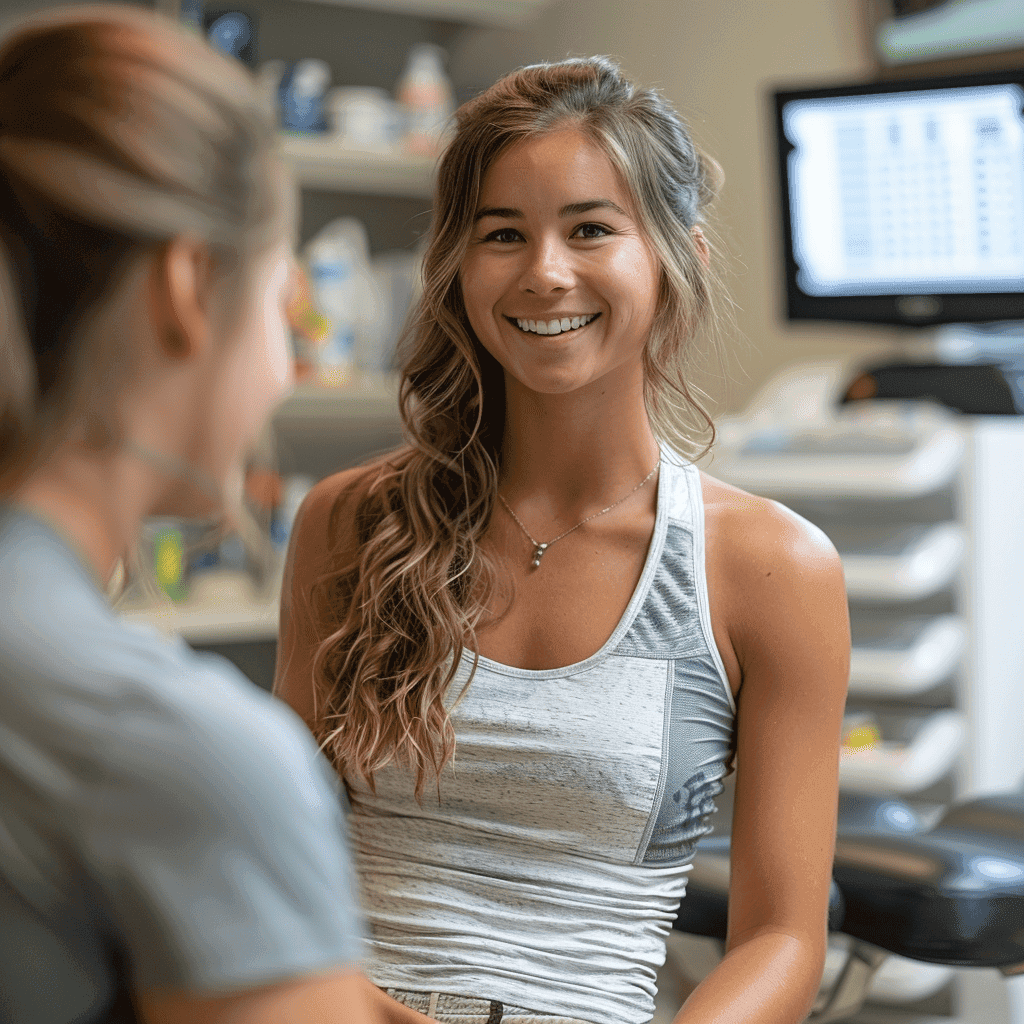Chiropractic care has emerged as a complementary approach in managing scoliosis, a spinal condition characterized by an abnormal lateral curvature. When integrated with traditional treatments, this article explores how chiropractic exercises for scoliosis can provide relief, improve posture, and enhance the quality of life for individuals with scoliosis.
Understanding Scoliosis
Scoliosis is not merely a physical condition; it’s a complex anomaly affecting millions worldwide. Its manifestations vary greatly, necessitating personalized care and management strategies.
Overview of Scoliosis
Scoliosis is a condition that prompts the spine to curve sideways, forming either an “S” or “C” shape. While it can occur at any age, it’s most commonly identified in children and adolescents. The curvature can be slight or severe, and in some cases, it progresses over time.
Different Types and Causes of Scoliosis
There are several types of scoliosis, including congenital, idiopathic, and neuromuscular. Congenital scoliosis is present at birth; idiopathic scoliosis, the most common type, has no known cause; and neuromuscular scoliosis is associated with conditions like cerebral palsy and muscular dystrophy. Factors contributing to scoliosis include genetic predisposition, environmental factors, and certain medical conditions.

Significance of Timely Detection and Management
Early detection and management of scoliosis are critical to preventing progression and reducing the impact on an individual’s life. Regular screenings during childhood and adolescence are essential, as early stages of scoliosis often go unnoticed due to minimal visible signs and symptoms.
Chiropractic Exercises for Scoliosis
Chiropractic care offers a non-invasive, holistic approach to managing scoliosis. It focuses on improving spinal alignment, relieving pain, and enhancing overall physical function through exercises, adjustments, and other manual therapies.
Fundamentals of Chiropractic Therapy
At its core, chiropractic therapy emphasizes the body’s ability to heal itself. Chiropractors use hands-on spinal adjustments and manipulations to reduce misalignments in the spine, aiming to improve the body’s physical function and alleviate pain.
Comparing Chiropractic Care with Conventional Treatments
Unlike conventional treatments that may include surgery and bracing, chiropractic care offers a non-surgical path to managing scoliosis. It’s often used with other treatments, providing a complementary approach that focuses on long-term wellness and mobility.
Advantages of Chiropractic Management for Scoliosis
Chiropractic management for scoliosis can lead to improved posture, reduced pain, and enhanced flexibility. It’s particularly beneficial for individuals seeking alternatives to invasive procedures or looking to manage mild to moderate scoliosis symptoms.
Initial Steps Before Beginning Chiropractic Exercises
Before embarking on chiropractic exercises, it’s crucial to undergo a thorough evaluation to tailor the treatment plan to an individual’s specific needs.
Initial Consultation and Assessment
The first step in chiropractic care is a detailed consultation and physical examination. This assessment helps chiropractors understand the curvature’s severity, identify any underlying causes, and determine the most effective treatment plan.

Diagnostic Procedures for Scoliosis
Diagnostic imaging, such as X-rays and MRI scans, may be used to get a clearer picture of the spine’s curvature. These tools aid in developing a comprehensive approach to managing scoliosis through chiropractic care.
Goal Setting and Outcome Expectations
Setting realistic goals and outcome expectations is essential in chiropractic care. Whether it’s improving posture, reducing pain, or enhancing mobility, clear objectives guide the treatment process and help measure progress.
Core Exercises and Techniques in Chiropractic Care
Chiropractic exercises are tailored to address the unique needs of individuals with scoliosis, focusing on strengthening, flexibility, and balance.
Flexibility and Stretching Techniques
Flexibility exercises aim to increase spinal mobility, reduce stiffness, and alleviate discomfort. Stretching the back and torso can help correct imbalances and promote a more natural alignment.
Strengthening the Core Musculature
Strengthening the core muscles supports the spine, improving posture and stability. Exercises targeting the abdomen, back, and pelvic muscles are integral to managing scoliosis effectively.
Corrective Postural Strategies
Postural correction exercises teach individuals how to maintain proper alignment throughout daily activities. These strategies can prevent further curvature progression and reduce the risk of complications.
Enhancing Balance and Coordination
Balance and coordination exercises are crucial for individuals with scoliosis, as they help improve proprioception — the body’s ability to perceive its position in space. Enhanced balance reduces the likelihood of falls and injuries, contributing to overall spinal health.
Advanced Chiropractic Interventions
Advanced chiropractic interventions may be employed for more severe cases of scoliosis or when basic exercises are not sufficient.
Techniques for Spinal Adjustment
Spinal adjustments involve precise manipulations to correct alignment issues. Skilled chiropractors perform these techniques to ensure safety and effectiveness.
Soft Tissue Therapy Using Instruments
Instrument-assisted soft tissue therapy targets muscles and ligaments affected by scoliosis. Tools like the Graston technique can help break down scar tissue and enhance movement.

Mobilization Methods for Improved Flexibility
Mobilization techniques increase joint mobility and flexibility, further aiding in the management of scoliosis. These gentle movements encourage a healthier range of motion and reduce pain.
Personalizing the Exercise Regimen
A one-size-fits-all approach does not apply to scoliosis management. Personalizing the exercise regimen is key to addressing individual needs and achieving the best outcomes.
Customizing Exercises According to Scoliosis Curve
Exercises are tailored based on the scoliosis curve’s type, location, and severity. This customization ensures that each individual receives the most appropriate and effective treatment.
Incorporating Exercises Seamlessly into Daily Routines
Incorporating chiropractic exercises into daily routines ensures consistency and maximizes the benefits of treatment. Simple adjustments to daily activities can make a significant difference in managing scoliosis.
Periodic Adjustments Based on Rehabilitation Progress
As individuals progress in their treatment, periodic adjustments to the exercise regimen are necessary. These adjustments ensure that the exercises remain effective and aligned with evolving goals.
Techniques for Sustained Progress and Prevention
Sustaining progress and preventing regression are crucial aspects of long-term scoliosis management.
Regular Monitoring and Adjustments by Chiropractors
Regular check-ups with a chiropractor allow for ongoing monitoring and necessary adjustments to the treatment plan. This proactive approach helps maintain progress and prevents potential setbacks.
Guidance on Lifestyle and Dietary Modifications
Lifestyle and dietary modifications can support chiropractic care in managing scoliosis. A healthy diet, regular exercise, and avoidance of activities that strain the spine contribute to overall well-being.
Strategies for Long-term Management and Prevention
Developing strategies for long-term management and prevention is essential for individuals with scoliosis. Education on proper ergonomics, regular physical activity, and posture mindfulness can prevent curvature progression and enhance quality of life.
Supplementary Therapies and Considerations
In addition to chiropractic care, supplementary therapies can offer additional benefits in managing scoliosis.
Role of Nutrition in Managing Scoliosis
A balanced diet rich in calcium and vitamin D supports bone health, which is vital for individuals with scoliosis. Nutritional guidance can complement chiropractic care and promote spinal health.
Importance of Psychological Support and Counseling
The psychological impact of scoliosis should not be underestimated. Support groups, counseling, and therapy can provide emotional support and coping strategies, enhancing the overall treatment experience.
Integrating Other Therapeutic Modalities
Integrating other therapeutic modalities, such as physical therapy, yoga, and Pilates, can further enhance the effectiveness of chiropractic care. These complementary therapies offer holistic benefits, addressing both physical and mental aspects of scoliosis management.
Conclusion and Future Directions
Chiropractic exercises and care present a promising avenue for managing scoliosis, offering a holistic approach that emphasizes non-invasive treatment, personalization, and comprehensive management strategies. While chiropractic care cannot cure scoliosis, it can significantly improve quality of life, reduce pain, and enhance mobility for those living with the condition.
Continued research and personalized care strategies will further the effectiveness of chiropractic interventions in scoliosis management, underscoring the importance of a multidisciplinary approach to spinal health.

